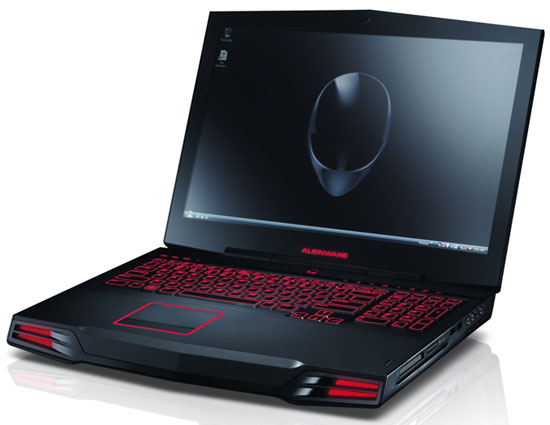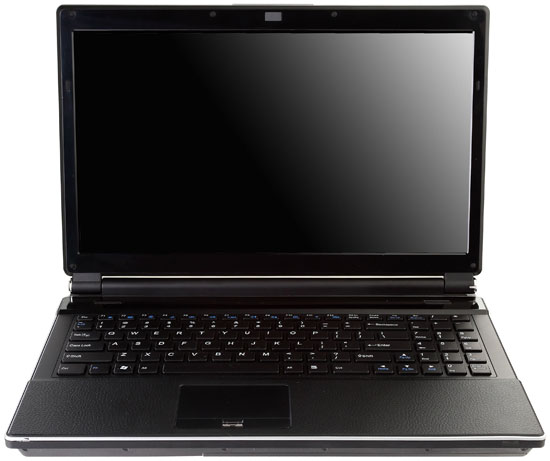Mobile Buyers' Guide, December 2009
by Jarred Walton on December 6, 2009 12:00 AM EST- Posted in
- Guides
High-End Laptops: $1500 and Up
At the top of the mobile price scale, we have laptops and notebooks that cost anywhere from $1500 to $5000 (or even more!), with components to match the prices. Most users spending this much money on a laptop are interested in one of three things: mobile gaming, mobile workstations, or "designer" laptops. We'll look at all three categories briefly.
The gaming and workstation crowds will want to start with reading our last High-end Laptop Roundup. That article will give you a good idea of what level of performance you can expect, and while all three notebooks in that article use Clevo chassis, switching to a different brand may improve aesthetics or features but likely won't change the performance picture.
High-End Gaming
If you want maximum gaming performance, for the time being you will be best served by a GTX 280M SLI configuration. There are two notebooks to choose from, both sporting similar features.
On the one hand, we have the Clevo M980NU (which we reviewed in the Eurocom M980NU Xcaliber). It supports Core 2 Duo/Quad/Extreme CPUs, and the minimum price for a 280M SLI setup is going to be around $2450; both AVADirect and Sager Notebooks have similar pricing, with a slight advantage to Sager (about $65 for a $2700 notebook). We chose a Core 2 Duo P9700, 2x2GB DDR3-1066, and a single 500GB 7200RPM HDD for our price comparison, with a price of $2779 from AVADirect and $2714 from Sager. If you prefer more detailed customization options, we'd recommend AVADirect over Sager simply by virtue of the number of options they give for each component.

The other option for a GTX 280M SLI notebook is the Alienware m17x. Some of you are probably thinking, "Oh, great… an expensive alternative from Alienware!" Well, you might be surprised by the pricing. We selected the same basic features as the M980NU but with a T9600 CPU (same clock speed as the P9700 but a higher TDP and $30 cheaper). We also upgraded from the default 1440x900 LCD to a 1920x1200 LCD. The final cost ended up at $2724, which is essentially a tie with the cheapest Clevo M980NU offerings. So the cost is the same, but let's discuss some differences.
For one, the m17x is a 17" chassis instead of an 18.4" chassis - though it's a large 17" chassis, so the difference isn't all that great. Some will like the 1920x1200 LCD instead of the 1920x1080 panel on the M980NU, though again they're pretty close. The biggest difference is in the aesthetics and a few extras on the Alienware. Aesthetics boil down to personal preference, but the m17x has zoned lighting that can be customized to your liking and we think it looks better. The bigger factor is that Alienware supports Hybrid GPUs, allowing you to switch off the GTX 280M SLI and run on the integrated 9400M. Battery life is still mediocre in comparison to other laptops, but we managed to get three hours from the m17x in a pinch. That particular setup used dual 7200 RPM HDDs and a Core 2 Extreme QX9300, running in Stealth mode (minimum CPU performance) with the 9400M. We also got two hours of Blu-ray playback using similar settings. That's not going to light the world on fire, but it's nice to be able to get more than an hour of battery life out of your $2500+ notebook.
Frankly, there's no reason that every gaming laptop shipped these days shouldn't support Hybrid GPUs with the ability to switch between discrete and integrated graphics. Typical gaming GPUs will consume at least 6 to 10W even at idle, which rapidly eats into battery life on a 6-cell or even 12-cell battery.

Other gaming options include laptops like the Clevo W860CU/W870CU (15.6" or 17" chassis, respectively). We looked at the Clevo W870CU and didn't care for the construction much, so we'd recommend going with the W860CU instead. You get the same basic features but with a smaller chassis, and you lose support for the second HDD.
What about ATI gaming laptops? First, the Alienware m17x also supports HD 4870X2 CrossFire, which is one option. Our testing of the ASUS W90Vp suggests that the GTX 280M SLI is faster, however, and NVIDIA's mobile driver program is definitely an advantage, so we can't see spending $100 extra to get 4870X2 over an SLI setup. A more interesting alternative is the HP Envy 15, which comes with the HD 4830. Performance of the GPU is going to be lower than the GTX 260M by virtue of the fact the 4830 uses a 128-bit interface, but the Envy 15 does look quite nice. A base configuration with i7-720QM will run $1800.










49 Comments
View All Comments
Hrel - Monday, December 7, 2009 - link
I've said it before on here I'd be glad to buy the ASUS UL80Vt if it only had a screen with a resolution of at least 1600x900 (decent quality screen required. like 1000:1 contrast ratio) The Intel SU9600 CPU instead with the same percentage overclock and the Nvidia GT240 GPU. Finally I'd like that laptop to cost less than 1000 dollars and get at least 7 hours internet battery life. If removing the integrated GPU and having only the dedicated GPU is required to keep the price down I'd be totally fine with that.Or better yet, sell it with the integrated GPU, leave the slot and heatsink for the dedicated GPU and offer the dedicated GPU as an add on or after-market purchase on newegg.
geok1ng - Sunday, December 6, 2009 - link
I really don't get the idea behind the suggestion of the ASUS UL80Vt on the sub $850 range, when you can get the Dell Studio 14z: you get a better CPU, a better IGP ( and having Nvidia 210M as add on VGA isn't really a great improvement over the 9400M G)and a better battery for the same price range.The problem is that outside Mac Books you simply dont get state of art notebook hardware: a C2D 45nm CPU, a 9400M G IGP and a small form factor. And a Non-TN LCDs is a dream.
LongTimePCUser - Monday, December 7, 2009 - link
For many people the ul80vt is a much better solution than the Dell 14z.The Dell 14z has a 5 hour battery life. The ul80vt has a 12 hour battery life.
The Dell 14z doesn't have a DVD player. The ul80vt has one.
JarredWalton - Sunday, December 6, 2009 - link
G210M is roughly twice the performance of 9400M G, and where 9400M still has games where it struggles, G210M can run everything, albeit at low details in some instances (i.e. Crysis @ LQ 1366x768 and 42.05FPS -- compare to 14z with 25FPS for the same setting, with a CPU that's running 38% faster). If you can get both the benefits of G210M performance with better battery life than 9400M, isn't that desirable?As for non-TN panels, I believe you're mistaken. Everything out right now is TN on laptops. MacBooks used some IPS in the past, but that was several years ago. They have matte LCDs on the 15" and 17" MBP, but that's about it.
Paulman - Sunday, December 6, 2009 - link
I was very surprised to see no mention of the AMD Athlon Neo based netbooks, such as the MSI Wind U210 or the HP dv2 series. My brother got an MSI Wind U210 with the Athlon Neo processor several months ago, and it ran Windows Vista on 1GB of RAM decently and I think the prices was just under $400 CDN online at Future Shop here in Canada. This was a 12.1" netbook (1366x768 with a bright LED backlight) at ~1.5 kg in weight with a 6-cell battery. I recently upgraded it to Windows 7 and it's running nicely.I quite like it, so I was disappointed to see that Athlon Neo-class products weren't even mentioned in this roundup.
JarredWalton - Sunday, December 6, 2009 - link
My experience with Neo is limited, but battery life didn't appear to be in the same ballpark as Atom and CULV products. Neo is faster than Atom, but CULV is clearly faster (dual-core CULV at 1.2GHz easily beats single-core MV-40).I guess it depends on what you're after. The MSI Wind U210 should get 3-5 hours of battery life at 100 nits. The HP dv2 with 4-cell battery looks like you'll get about two hours of Internet surfing, or 3 hours with the 6-cell upgrade. So if you're after battery life, Neo isn't an answer to Atom or CULV. However....
When Neo is paired with a decent GPU, you can get much better than Atom performance, but the price of the HP dv2 is too high (nearly as much as the ASUS UL80Vt and UL30Vt). The Wind U210 uses X1270 IGP, which is only slightly better than GMA 4500MHD in terms of performance. Still, the Wind U210 would be a better choice for Neo than the HP dv2... pairing a (relatively) low power CPU like Neo with a discrete GPU doesn't make much sense, unless you can turn the dGPU off and run on an IGP when you want (a la UL80Vt).
rwrentf - Friday, December 11, 2009 - link
I posted a comment about the HP DM3 asking you how that would compare, and for some reason my comment is gone. The DM3 has a dual core neo (L335), 4GB ram, 7200 rpm hard drive and ATI HD3200 graphics. You say in your comment that the CULV is clearly faster, but I haven't seen any tests that back that up online. And Why would you compare the dual core CULV directly to a single core MV-40 when you can compare it to a dual core L335?JarredWalton - Friday, December 11, 2009 - link
I'd expect a 1.3GHz CULV (i.e. Pentium SU4100) to be roughly on par with the performance of the L335 (1.6GHz), and I would expect the L335 to use more power (18W TDP, but in my experience AMD chips run much closer to TDP than Intel chips). However, HD 3200 is still 2~3 times faster than GMA 4500MHD (though still too slow for gaming IMO).I suppose the question is what sort of battery life you can get out of such a laptop compared to CULV options of a similar price. I found a comment from an HP representative (off Wal-mart) stating around 3 hours from the DM3, which is about half of what a typical $600 CULV will get, but elsewhere you see "up to 6 hours". If it can truly get 6 hours, it's definitely worth a look.
Incidentally, if I were to go with a DM3, I'd grab the Turion X2 L625 -- better power characteristics than the Athlon X2 L335.
zefyr - Sunday, December 6, 2009 - link
I commend you you on a thorough article. You've covered many of the laptops I've been looking at, and indeed have raised the same question "Any Good LCDs?" But, whats the answer? Especially if you plan on buying online. Can one find a high contrast LCD w good blacks like the Sony VAIO you mentioned and also get a gaming level NVIDIA GPU? Can it be done online w/o actually seeing it in person? I've almost bought both an ASUS g51vx and g71 for $800 or $900 respectively, until I realized the only thing they lack is a good LCD. Anyone, please post any suggestions.kawatwo - Sunday, December 6, 2009 - link
I have the G71x from Best Buy and the viewing angle is not great but for just you sitting directly in front of the laptop it is not an issue. The bang for the buck is still amazing. Don't know how long it will take for someone to come out with a 280m for ~ 1500, maybe never. I'm happy with the 260m though.